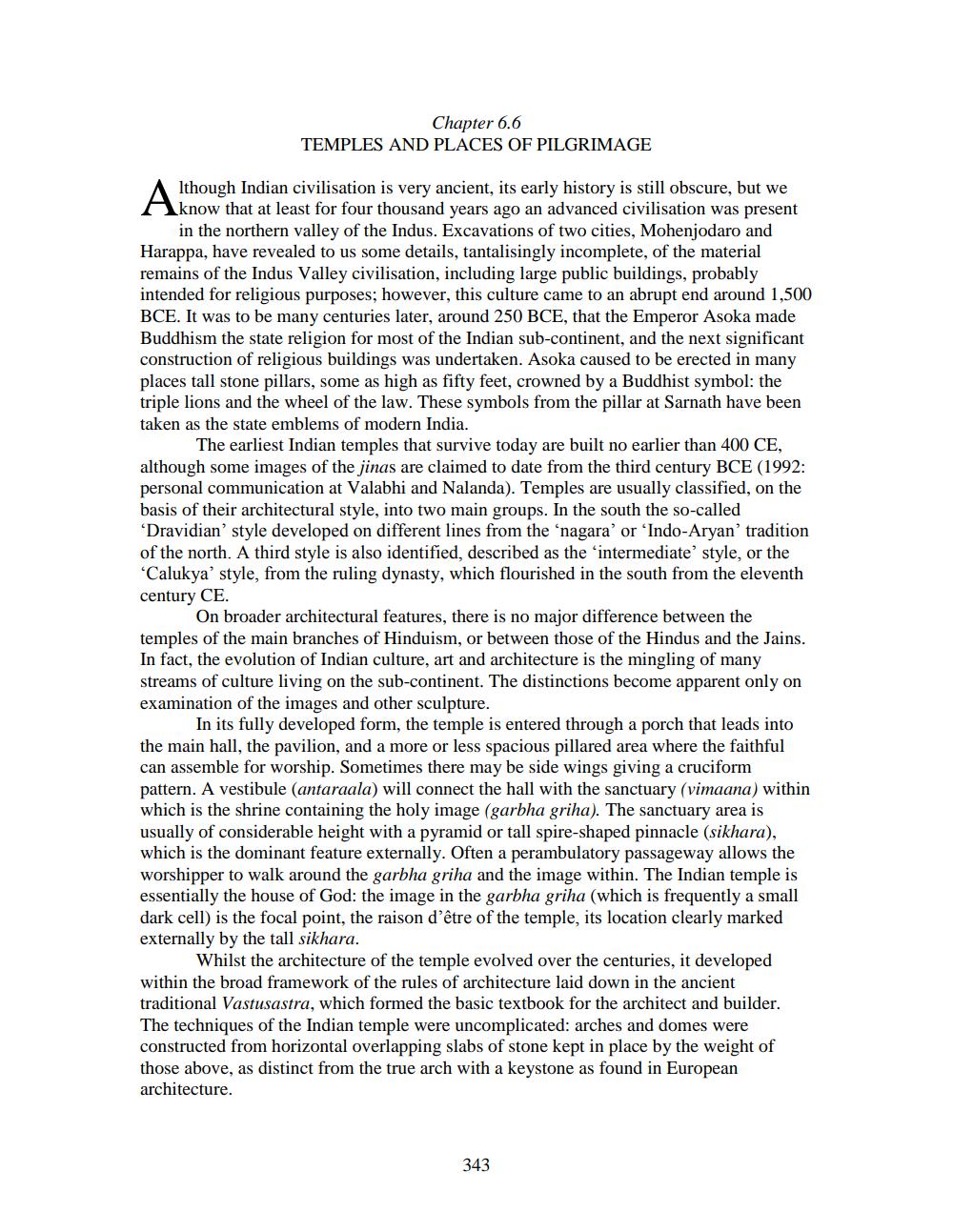________________
Chapter 6.6 TEMPLES AND PLACES OF PILGRIMAGE
lthough Indian civilisation is very ancient, its early history is still obscure, but we A know that at least for four thousand years ago an advanced civilisation was present
in the northern valley of the Indus. Excavations of two cities, Mohenjodaro and Harappa, have revealed to us some details, tantalisingly incomplete, of the material remains of the Indus Valley civilisation, including large public buildings, probably intended for religious purposes; however, this culture came to an abrupt end around 1,500 BCE. It was to be many centuries later, around 250 BCE, that the Emperor Asoka made Buddhism the state religion for most of the Indian sub-continent, and the next significant construction of religious buildings was undertaken. Asoka caused to be erected in many places tall stone pillars, some as high as fifty feet, crowned by a Buddhist symbol: the triple lions and the wheel of the law. These symbols from the pillar at Sarnath have been taken as the state emblems of modern India.
The earliest Indian temples that survive today are built no earlier than 400 CE, although some images of the jinas are claimed to date from the third century BCE (1992: personal communication at Valabhi and Nalanda). Temples are usually classified, on the basis of their architectural style, into two main groups. In the south the so-called ‘Dravidian' style developed on different lines from the 'nagara' or 'Indo-Aryan' tradition of the north. A third style is also identified, described as the 'intermediate' style, or the 'Calukya' style, from the ruling dynasty, which flourished in the south from the eleventh century CE.
On broader architectural features, there is no major difference between the temples of the main branches of Hinduism, or between those of the Hindus and the Jains. In fact, the evolution of Indian culture, art and architecture is the mingling of many streams of culture living on the sub-continent. The distinctions become apparent only on examination of the images and other sculpture.
In its fully developed form, the temple is entered through a porch that leads into the main hall, the pavilion, and a more or less spacious pillared area where the faithful can assemble for worship. Sometimes there may be side wings giving a cruciform pattern. A vestibule (antaraala) will connect the hall with the sanctuary (vimaana) within which is the shrine containing the holy image (garbha griha). The sanctuary area is usually of considerable height with a pyramid or tall spire-shaped pinnacle (sikhara), which is the dominant feature externally. Often a perambulatory passageway allows the worshipper to walk around the garbha griha and the image within. The Indian temple is essentially the house of God: the image in the garbha griha (which is frequently a small dark cell) is the focal point, the raison d'être of the temple, its location clearly marked externally by the tall sikhara.
Whilst the architecture of the temple evolved over the centuries, it developed within the broad framework of the rules of architecture laid down in the ancient traditional Vastusastra, which formed the basic textbook for the architect and builder. The techniques of the Indian temple were uncomplicated: arches and domes were constructed from horizontal overlapping slabs of stone kept in place by the weight of those above, as distinct from the true arch with a keystone as found in European architecture.
343




